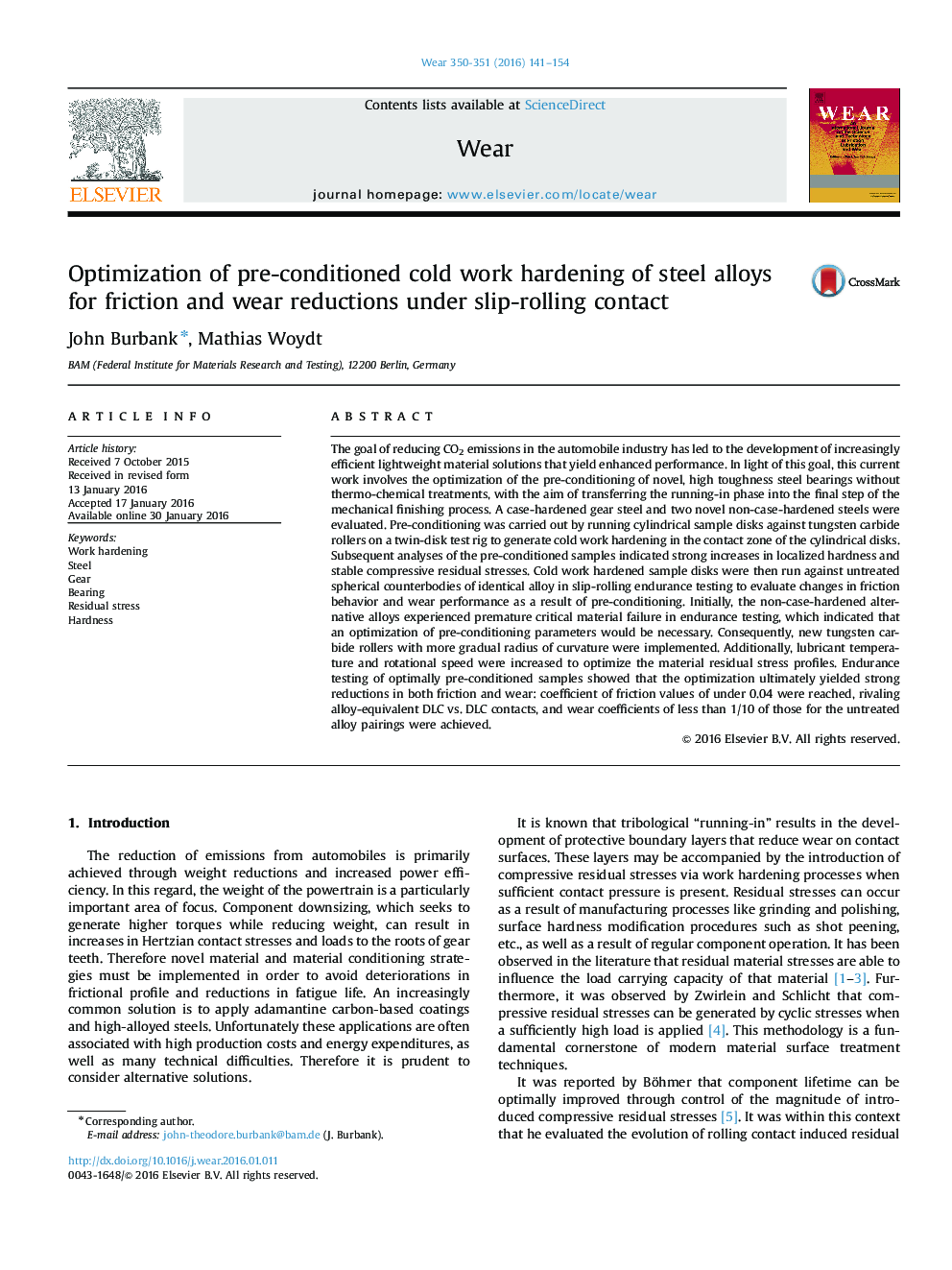| کد مقاله | کد نشریه | سال انتشار | مقاله انگلیسی | نسخه تمام متن |
|---|---|---|---|---|
| 616943 | 1454966 | 2016 | 14 صفحه PDF | دانلود رایگان |
• Slip-rolling testing on three industrially available steels.
• Cold work hardening generated with hard tungsten carbide rollers.
• Characterization of residual stresses and hardened steel substrates.
• Improved friction and wear performance of pre-conditioned steels.
• Performance that rivals thermo-chemically treated equivalents achieved.
The goal of reducing CO2 emissions in the automobile industry has led to the development of increasingly efficient lightweight material solutions that yield enhanced performance. In light of this goal, this current work involves the optimization of the pre-conditioning of novel, high toughness steel bearings without thermo-chemical treatments, with the aim of transferring the running-in phase into the final step of the mechanical finishing process. A case-hardened gear steel and two novel non-case-hardened steels were evaluated. Pre-conditioning was carried out by running cylindrical sample disks against tungsten carbide rollers on a twin-disk test rig to generate cold work hardening in the contact zone of the cylindrical disks. Subsequent analyses of the pre-conditioned samples indicated strong increases in localized hardness and stable compressive residual stresses. Cold work hardened sample disks were then run against untreated spherical counterbodies of identical alloy in slip-rolling endurance testing to evaluate changes in friction behavior and wear performance as a result of pre-conditioning. Initially, the non-case-hardened alternative alloys experienced premature critical material failure in endurance testing, which indicated that an optimization of pre-conditioning parameters would be necessary. Consequently, new tungsten carbide rollers with more gradual radius of curvature were implemented. Additionally, lubricant temperature and rotational speed were increased to optimize the material residual stress profiles. Endurance testing of optimally pre-conditioned samples showed that the optimization ultimately yielded strong reductions in both friction and wear: coefficient of friction values of under 0.04 were reached, rivaling alloy-equivalent DLC vs. DLC contacts, and wear coefficients of less than 1/10 of those for the untreated alloy pairings were achieved.
Journal: Wear - Volumes 350–351, 15 March 2016, Pages 141–154
